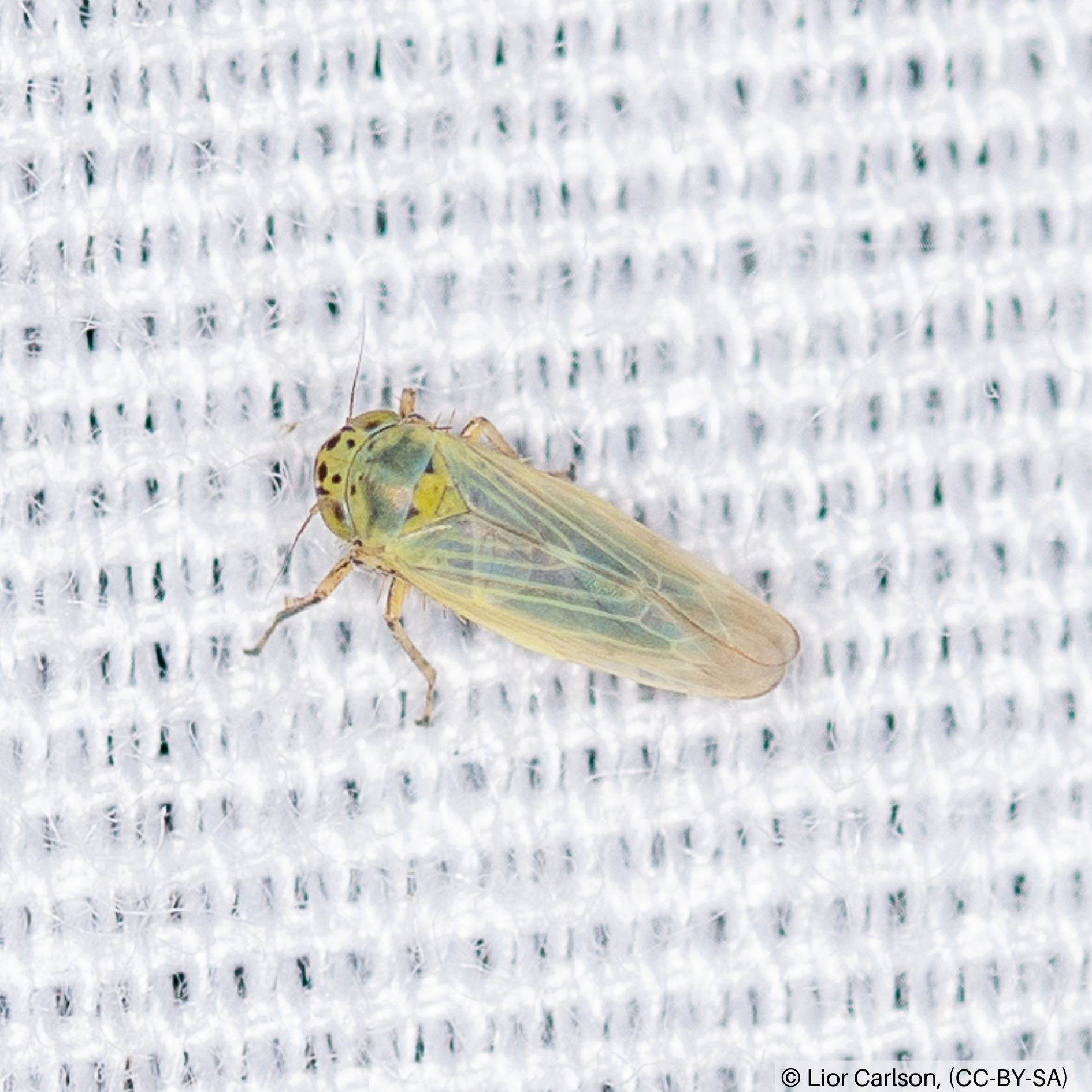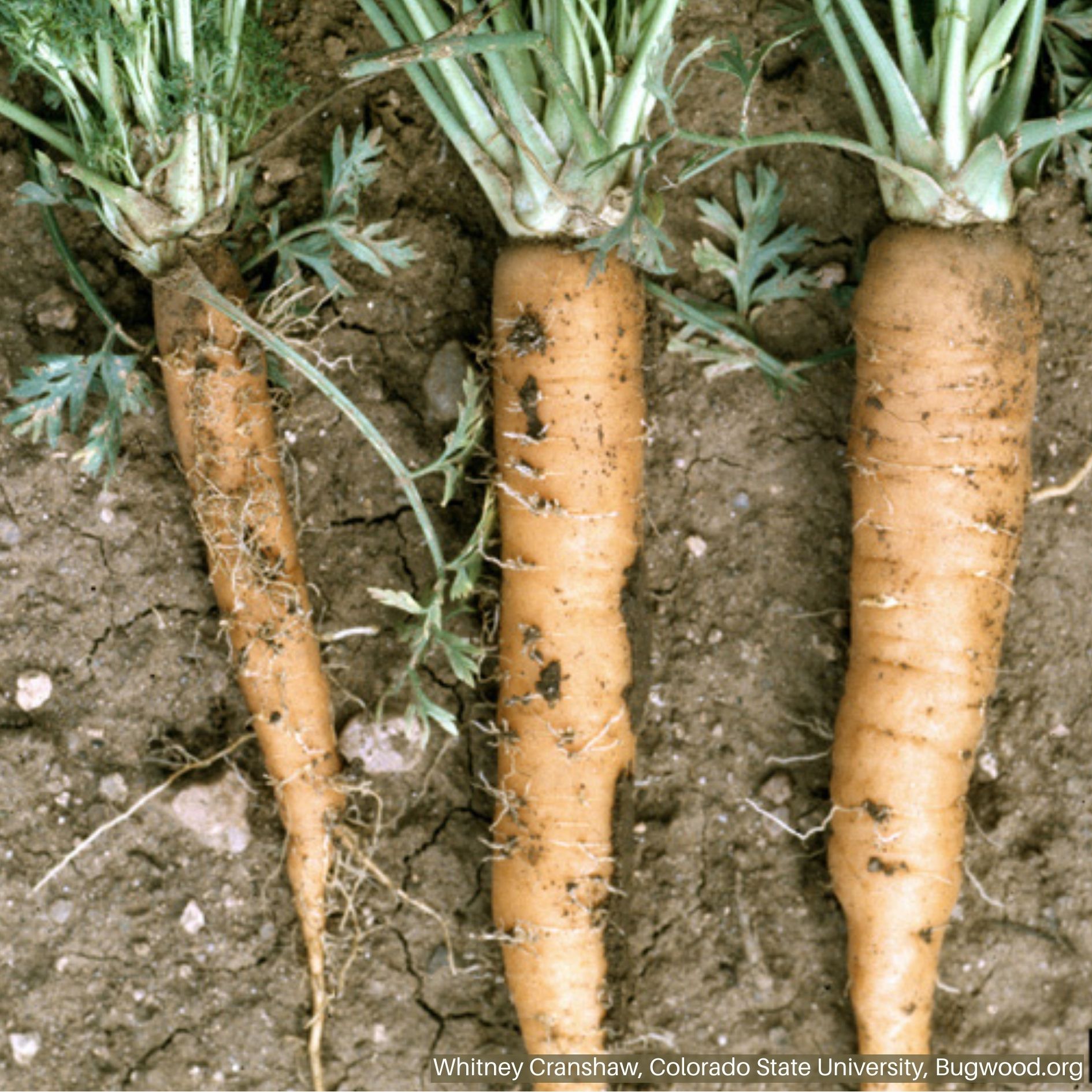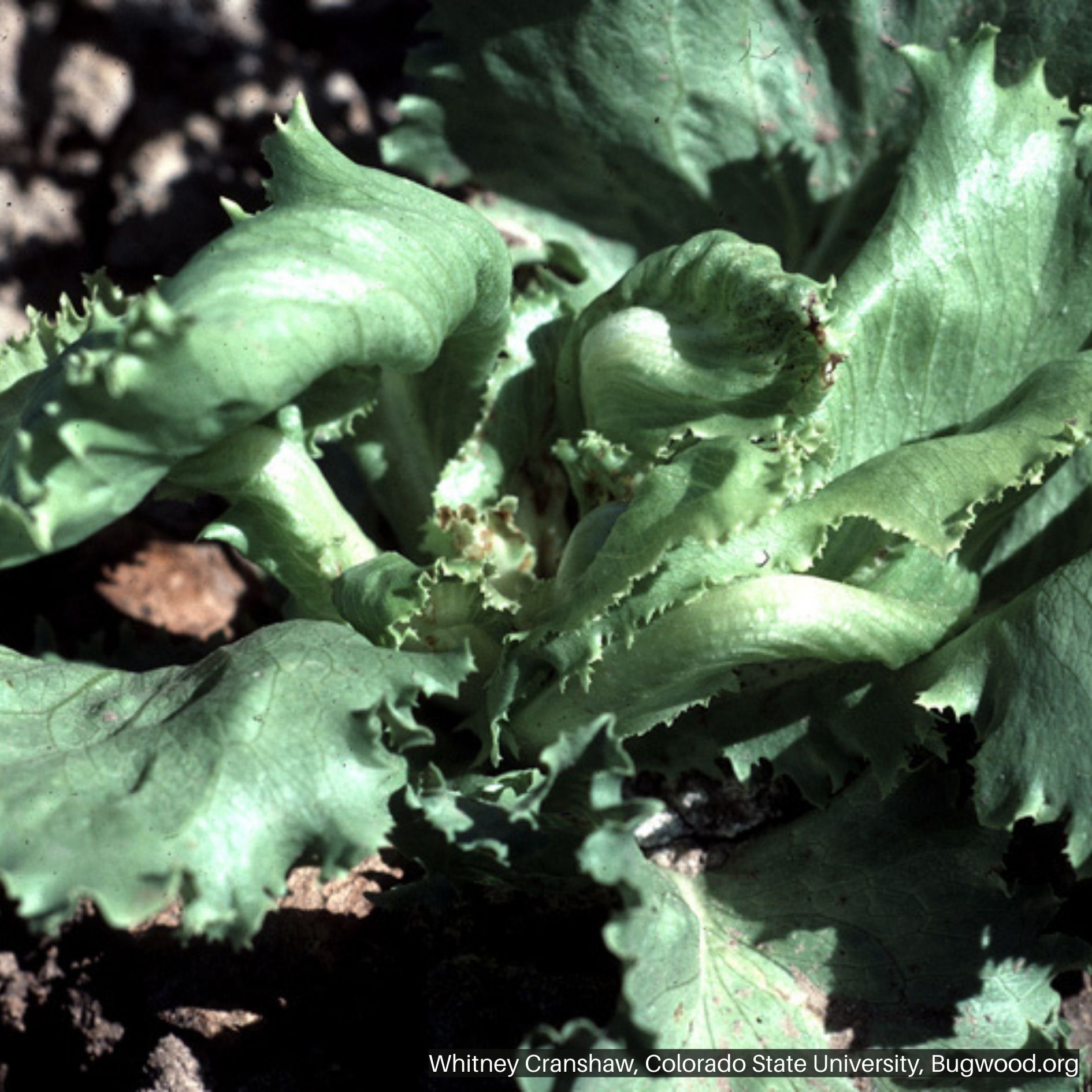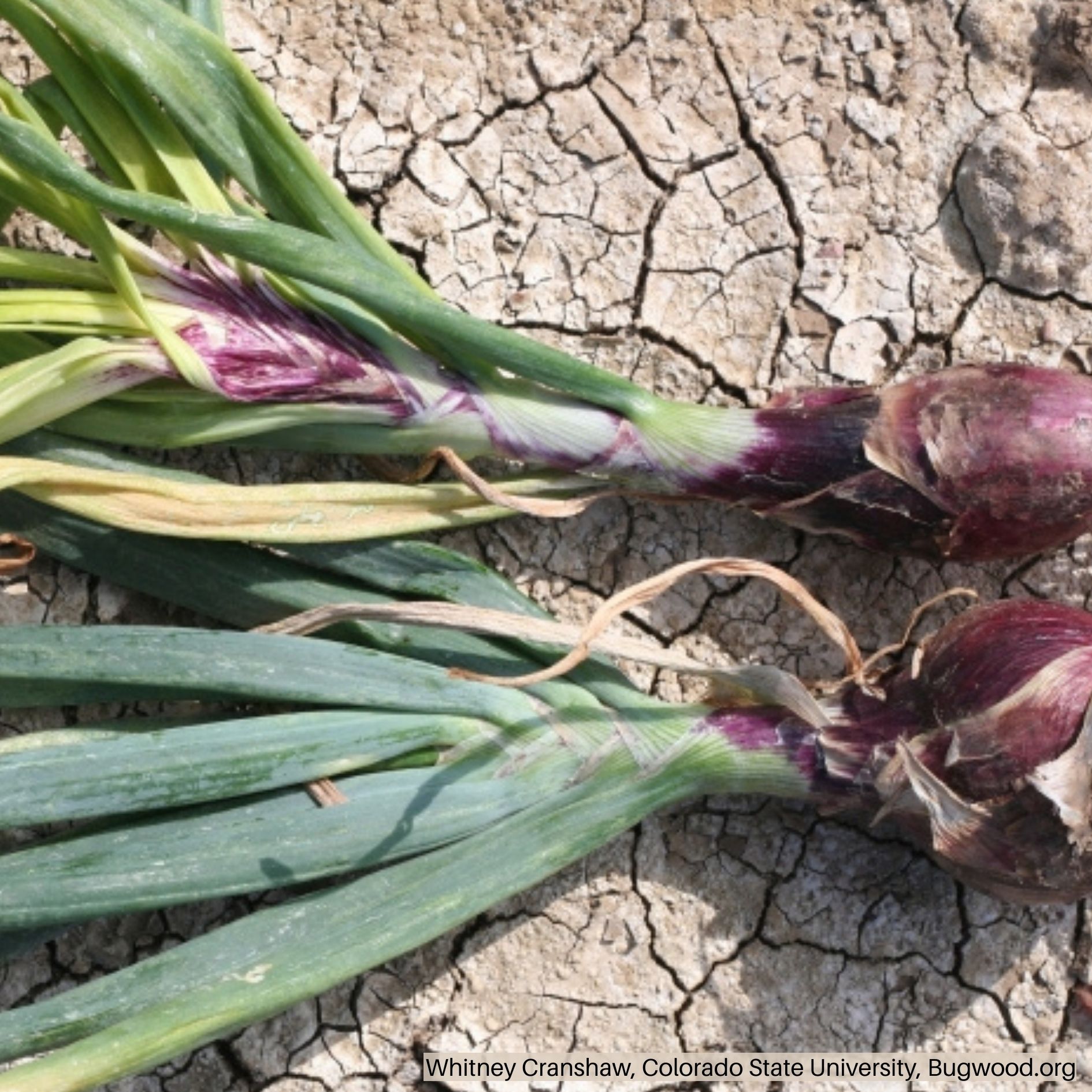Aster Yellows
 Aster Leafhopper
Aster Leafhopper Infected Carrots (Left Two) Compared to a Healthy Carrot (Right)
Infected Carrots (Left Two) Compared to a Healthy Carrot (Right) Infected Lettuce with Head Twisting, a Symptom of Aster Yellows
Infected Lettuce with Head Twisting, a Symptom of Aster Yellows An Infected Onion (Top) with Twisting and Yellowing Leaves Compared to a Healthy Onion (Bottom)
An Infected Onion (Top) with Twisting and Yellowing Leaves Compared to a Healthy Onion (Bottom)HOSTS
- Carrots
- Celery
- Lettuce
- Wheat
DESCRIPTION
Aster yellows is caused by a specialized bacterium called phytoplasma (Candidatus Phytoplasma asteris) that lives within plant tissue. The primary vector of the disease is the aster leafhopper, which spreads the pathogen from plant to plant when feeding. Once an aster leafhopper feeds on an infected plant, they will spread the bacteria for the rest of their life.
There is no treatment for aster yellows, thus all infected plants should be removed.
BIOLOGY
The aster yellows phytoplasma infect plant phloem, the vascular tissue that moves food throughout the plant. Through the phloem, the pathogen is able affect all parts of the plant, including roots, flowers, and foliage.
When an aster leafhopper feeds on an infected plant, they will ingest some of the phytoplasma along with the plant sap. Before the leafhopper is able to transmit the disease, the phytoplasma will reproduce within the leafhopper and move to its salivary glands. This incubation period will take the leafhopper will spread the disease as it feeds on other plants in the future.
The phytoplasma can only survive within living plant tissue or within a leafhopper.
SYMPTOMS
Aster yellows can cause various symptoms depending on what the host plants is. Common symptoms include:
- Small, stunted plants
- Deformed flowers and foliage
- Twisted leaf growth
- Yellow or white leaf discoloration
- Growth of multiple small stems, called a Witch’s Broom
- In carrots, leaves may turn red or purple, and taproots will be covered in root hairs
GENERAL MANAGEMENT
- Remove infected plants
- Manage weeds around the garden or fields
- Row covers can be effective at keeping leafhoppers from feeding on plants

